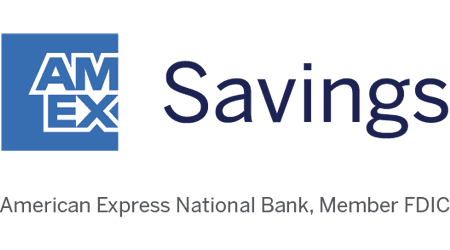| APY | 3.40% |
|---|---|
| Fee | $0 |
| Minimum deposit to open | $0 |
| New account fee | $0 |
| Minimum balance to earn interest | $0 |
| Interest compounding | Daily |
Savings accounts and savings bonds are built for the same purpose — and it’s right in their names. Both allow you to save money, albeit not at the strongest rates. But you’ll find distinct differences between these two financial tools.
Savings accounts vs. savings bonds: What sets them apart?
Many banks offer accounts that can help you save money with few fees and easy access. But they don’t come with the nearly 80-year history of a US savings bond.
Still, their differences go beyond nostalgia to include how much you’re able to save, whether you’ll pay taxes on what you earn and more.
Savings accounts
- Variable rates range from 0.01% to as high as 5%.
- Some accounts require no minimum balance.
- Deposit as much as you want.
- Withdraw money any time.
- Interest is fully taxable.
Savings bonds
- Fixed interest rate of 0.10% over the life of your bond.
- $25 minimum to buy a bond.
- $10,000 annual purchase limit.
- Must hold the bond at least one year before redeeming.
- Interest is tax-free if redeemed toward educational expenses.
Compare the latest savings account rates
Compare other products
We currently don't have that product, but here are others to consider:
How we picked theseWhat is the Finder Score?
The Finder Score crunches over 250 savings accounts from hundreds of financial institutions. It takes into account the product's interest rate, fees, opening deposit and features - this gives you a simple score out of 10.
To provide a Score, Finder’s banking experts analyze hundreds of savings accounts against FDIC-reported national averages as a baseline. Accounts with rates well over the national average are scored the highest, while accounts with rates well below are scored low.
Similarities
Savings accounts and savings bonds are similar when it comes to:
- Safety. Both are backed by the US government, so you can’t lose money by buying a bond or depositing money into a savings account.
- Predictable returns. You can calculate the interest you’ll earn on your deposit.
- Medium-term savings. Both accounts are best for those who aren’t looking for access to their money in the next 12 or more months, though savings accounts provide a bit more flexibility for early withdrawals.
Types of US savings bonds
The two main types of savings bonds are EE Bonds and I Bonds. Both are solid ways to save money, but with important differences.
EE Bonds
- Only available online.
- Interest rate set when you buy the bond.
- Available in amounts of $25 or more.
I Bonds
- Available in paper or online.
- Interest rate is a composite fixed amount plus an inflation adjustment.
- Purchase paper bonds in $50 increments and online bonds in amounts of $25 or more.
Old savings bonds
Savings bonds have been around for a long time. The first savings bonds were sold after President Franklin D. Roosevelt signed legislation creating them in 1935. Ever since, they’ve been a popular way to save money for the future.
Savings bonds have undergone many changes in that time. Even the modern EE bond, the type that most Americans are familiar with, has changed over the years.
Prior to 1995, EE bonds earned a fixed rate of interest with a guarantee to double in value after a specific period of time. For example, a bond purchased for $25 in April 1995 earned 4% per year with a guaranteed value of $50 in April 2013.
Even after the value of the bond doubled, it continued to earn interest 30 years after the bond was issued.
If you have old savings bonds, they could be worth more than you think. The Department of Treasury’s savings bond calculator can help you find out how much your old bonds are worth.
How to buy or cash in
Everyday savings accounts offer an easy way to earn interest on your money with flexible deposits and withdrawals, while savings bonds lock up your money for a year before allowing you to withdraw your money.
Savings accounts
You can make deposits to your savings account online through mobile check deposits or transfers. Withdraw your money at a branch, an ATM or by transferring it into another account electronically.
Savings bonds
The easy way to buy a savings bond is online through the Department of Treasury’s site. With an electronic bond, you never have to handle physical bonds or worry about storing them. You can purchase either I bonds or EE bonds in any amount of at least $25.
To redeem an electronic bond, log in to the Department of Treasury’s site and select the bonds you want to redeem. You can then send the money to your bank electronically.
For paper bonds, you’re limited to I bonds only, and you can only purchase them using your tax refund. You can buy up to $5,000 in paper I bonds each year in increments of:
- $50
- $100
- $200
- $500
- $1,000
Redeeming a paper bond involves converting it to an electronic bond and redeeming it online. You can also redeem it by visiting a local bank or mailing it to the Treasury.
Bottom line
Savings accounts and savings bonds share features, but they’re designed for slightly different goals.
Your everyday savings account offers a place to keep money that you might need quickly for, say a financial emergency. While savings bonds are better suited for a long-term investment of money you won’t need until later.
Frequently asked questions
Ask a question
More guides on Finder
-
Banks Where You Shouldn’t Park Your Savings: Low Rates and High Fees
These four savings accounts have some of the worst rates out there — you can do better.
-
Savings Accounts with ATM and Debit Cards
Wealthfront, Synchrony and SoFi have some of the top savings accounts that come with ATM cards for easy access to your cash.
-
Best Savings Accounts for the Holidays and Christmas
Compare the best savings accounts for holiday savings, and see how to make a savings plan.
-
Top 5% Interest Savings Accounts
Earn up to 6% with Greenlight, 5% with Varo and just under 5% with Barclays, Western Alliance, Uphold, Wealthfront and more.
-
SoFi Savings Account Review
SoFi’s high-yield savings account is a hybrid checking and savings account featuring a high APY, cashback rewards and minimal fees.
-
Best Vacation Savings Accounts in December 2025
SoFi, Discover, Wealthfront, Varo, Uphold, Bask Bank, Current, Marcus and Ally offer top vacation savings accounts with high APYs.
-
Locked Savings Accounts You Can’t Touch December 2025
If you struggle to save, you could benefit from a savings account or CD that won’t allow you to withdraw funds.
-
Uninterrupted Compound Interest Accounts December 2025
Uninterrupted compound interest accounts pay interest on your initial balance and the interest you continually earn if you don’t withdraw.
-
Best Savings Accounts of December 2025
Compare the six best savings accounts in the market, such as Netspend, Pibank and Bread.
-
Best High-Yield Savings Accounts of December 2025
Compare some of the best high-yield savings accounts available.

